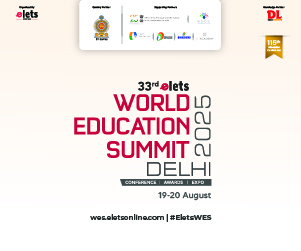(Dr Sankaran Raghunathan, Dean, The National Management School, India, is an expert in transcript or document security matters)
One issue that is being addressed across countries in higher education is the secure generation, distribution, and, subsequent verification of transcripts. Traditionally, transcripts are printed on paper and delivered to students. In order to secure the transcript, universities started the use of a security paper to print the transcript on, hoping that a secure media also secures the data. The cost of such a secure paper is passed on to the student.
Verification of transcripts issued by universities poses its own logistical nightmares. Employers who receive transcripts from graduates or universities who receive transcripts from applicants need to have these paper transcripts verified for authenticity. Such verification is done directly with the issuing university; this is time consuming and expensive. Employers engage third-party agencies for such verification. The issuing university needs to devote resources to process requests for verification.
In order to avoid such verification requests, universities established the practice of taking the request for transcripts from students and sending the transcripts directly to the final recipient; this way the receiving university or employer gets the transcript directly from the issuing university and therefore further verification become redundant. However, the issue of securing the paper transcript still remains. In spite of using security paper for transcripts, tampering and fraudulent transcripts could not be avoided.
Drawbacks
The EDI system can only work when the member institutions harmonise their systems to generate, send and receive transcript data in a particular format. Therefore, the EDI system works well only within a system of universities within a state system. Recipients outside the system therefore are unable to participate.
The Central Repository method suffers from the general flaws of any centralised system – the need to have a huge infrastructure, security of such a central database, sharing of student records by universities with a third party are not insignificant issues. The very weight of such a repository brings it down.
The eTranscript or PDF transcript system, while elegant in its electronic automated process for handling requests from students and generating transcripts and directly distributing the transcript to the end recipient suffers from one fundamental flaw of requiring the originating university to share the student record with the third party which uses the software system to generate the PDF transcript. Legislations such as the FERPA in the United States prohibit such sharing of student records with third parties. In addition, this system also requires high expenditure on new software systems and hosting infrastructure.
Imagine a situation where universities can generate transcripts either on ordinary paper or electronically in a very secure format that cannot be tampered with; distribute this secure transcript without the need for sharing the data with any third party; with the transcript so issued being verifiable at any time or place via the Internet without recourse to the original database or the issuing University.
The solution that meets all these requirementswill be discussed in the next part.
Strategies prevalent across various countries:
|
An apt solution for universities should:
|


























